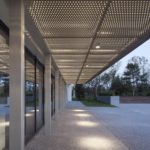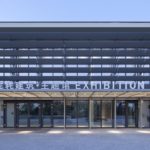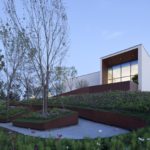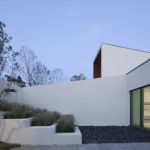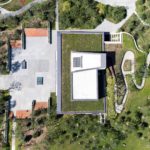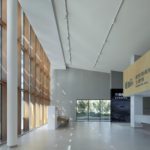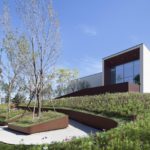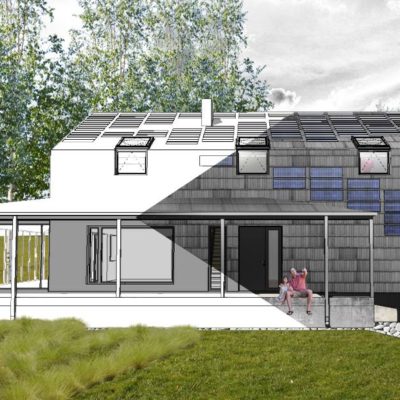Passive House Pavilion Lonfor Sundar
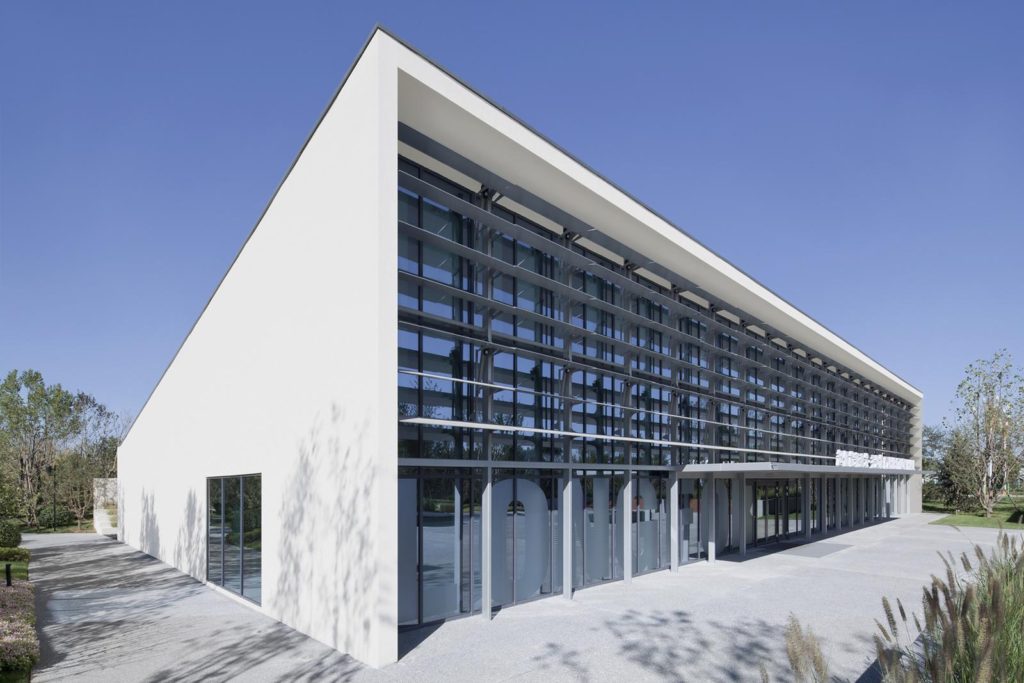
In order to improve the heat performance, the north side of the building is sheltered with earth. The shape of the pavilion merges with the landscape topography, which make the pavilion’s north facade completely vanished into the natural landscape. At the same time, the south side is made with curtain wall, which could work as solar collector in winter for passive heating and as a mirror reflecting clearly the surrounding environment to extend natural landscape in summer.
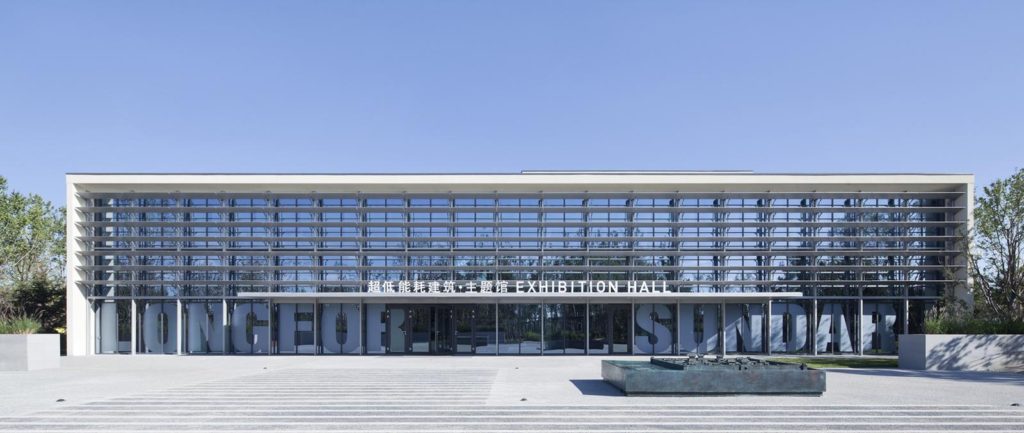
Meanwhile, the heat lose is reduced notably through higher building insulation, better air tightness of windows & doors, and reducing thermal bridges. And the curtain wall, forming the whole south façade, could also contribute to heat gaining in winter. While in summer, the sun-shading system functions automatically, tracing the orientation of the sunlight, preventing interior space from overheat.
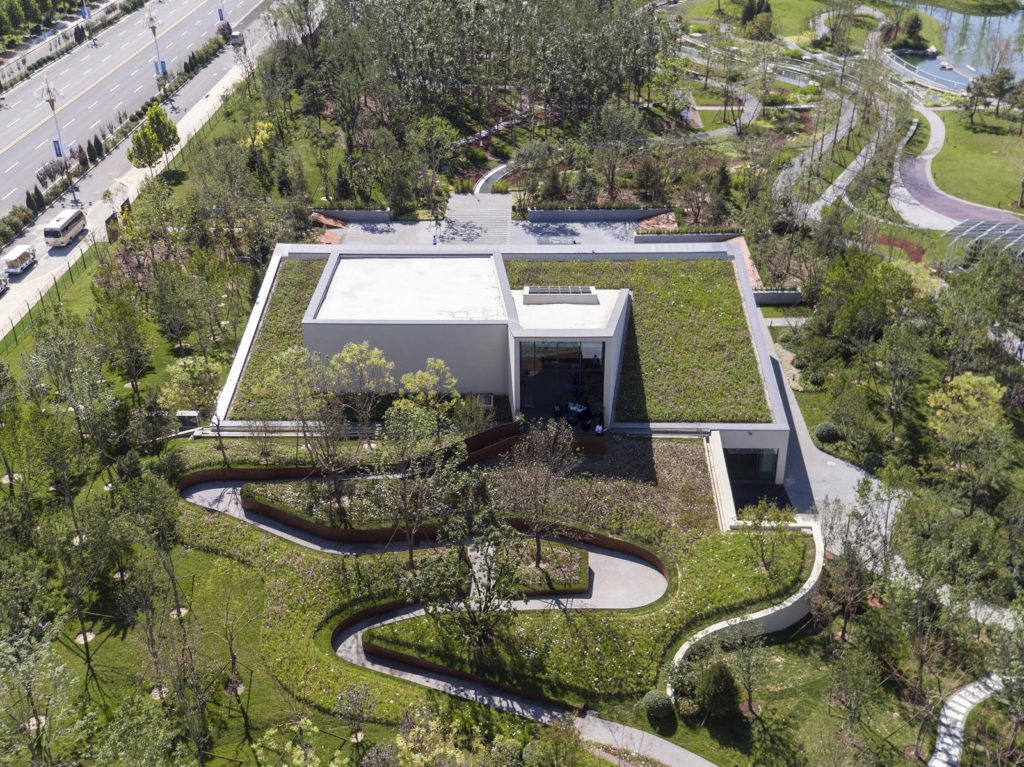
The basic prototype of the pavilion is made of two wedges, fulfilling the requirement of space from client into the minimum shape coefficient of the building, reducing the total amount of material usage. Meanwhile, the framed structure allows the various way of exhibitions, which could also reduce material usage during multiple temporary refurbishment. Owing to the better building envelope, the main structure is well protected from environment, which could extend the life of the building.
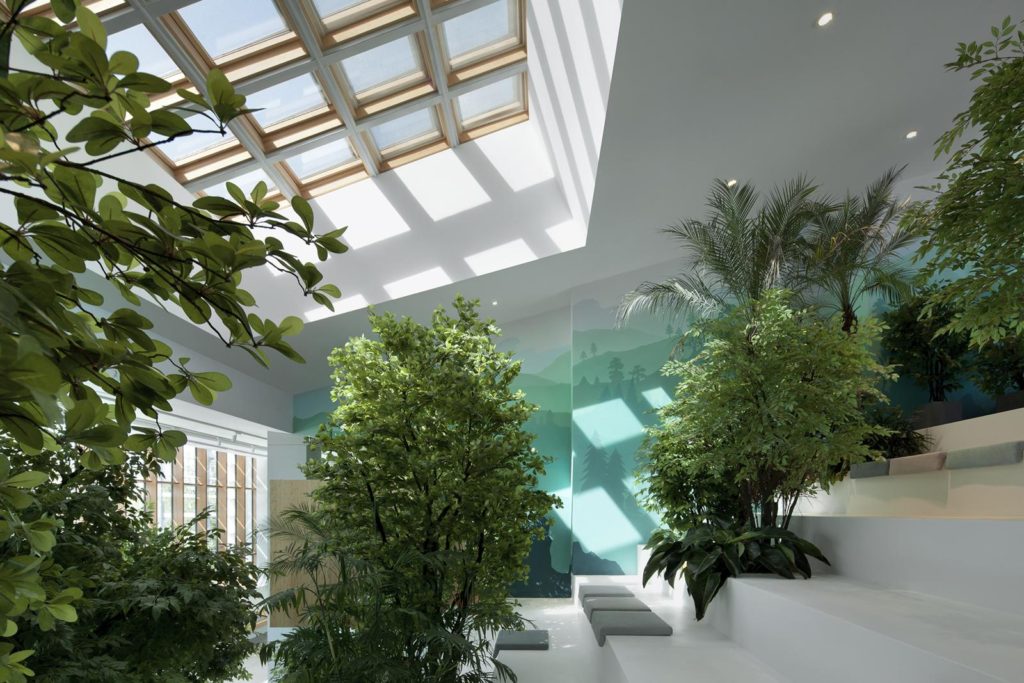
The building is mostly prefabricated, shortening the construction time, reducing the environment impact during construction. And the main structure is made of steel and the curtain wall is composed of timber frame and glass, which are all recyclable after years.

